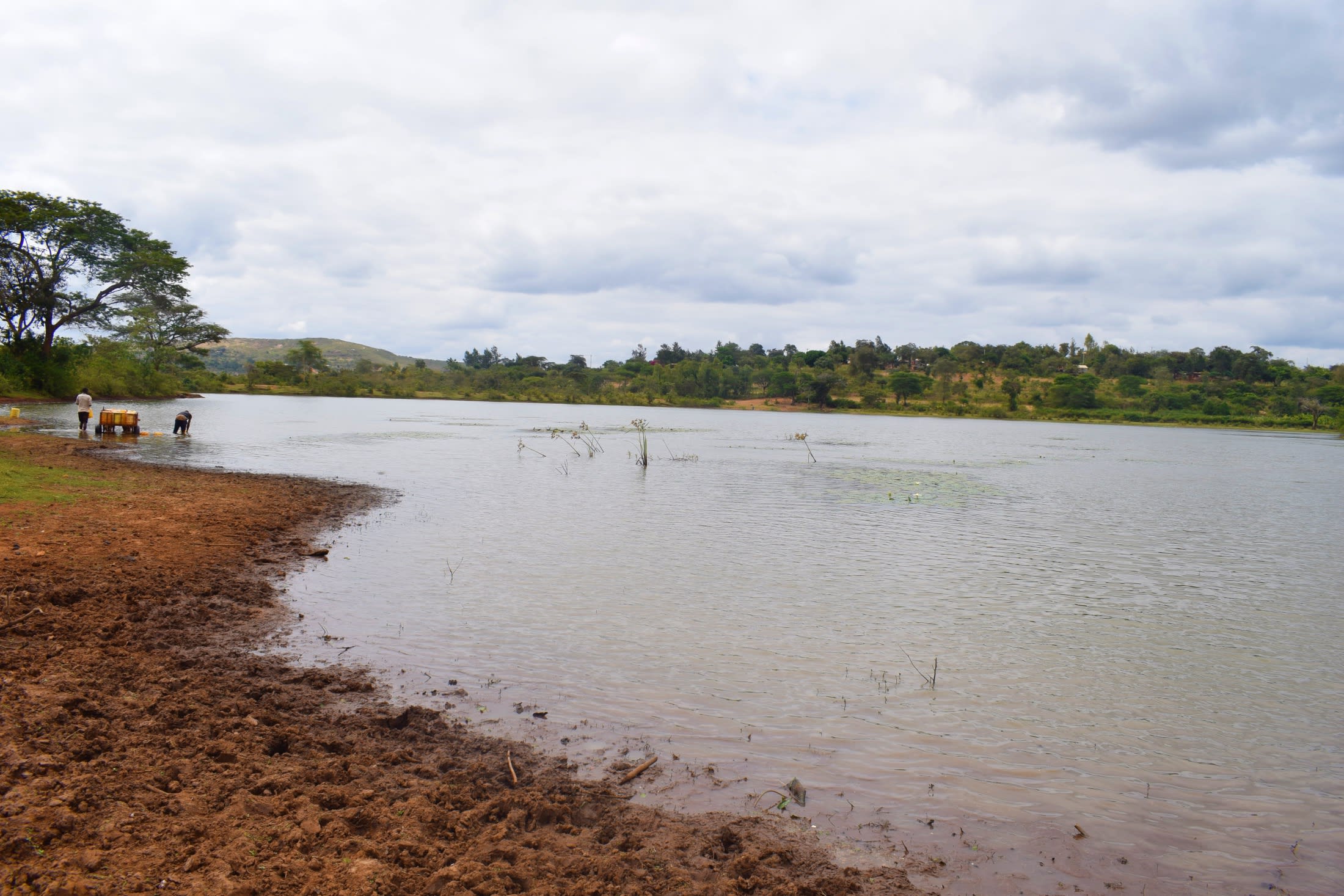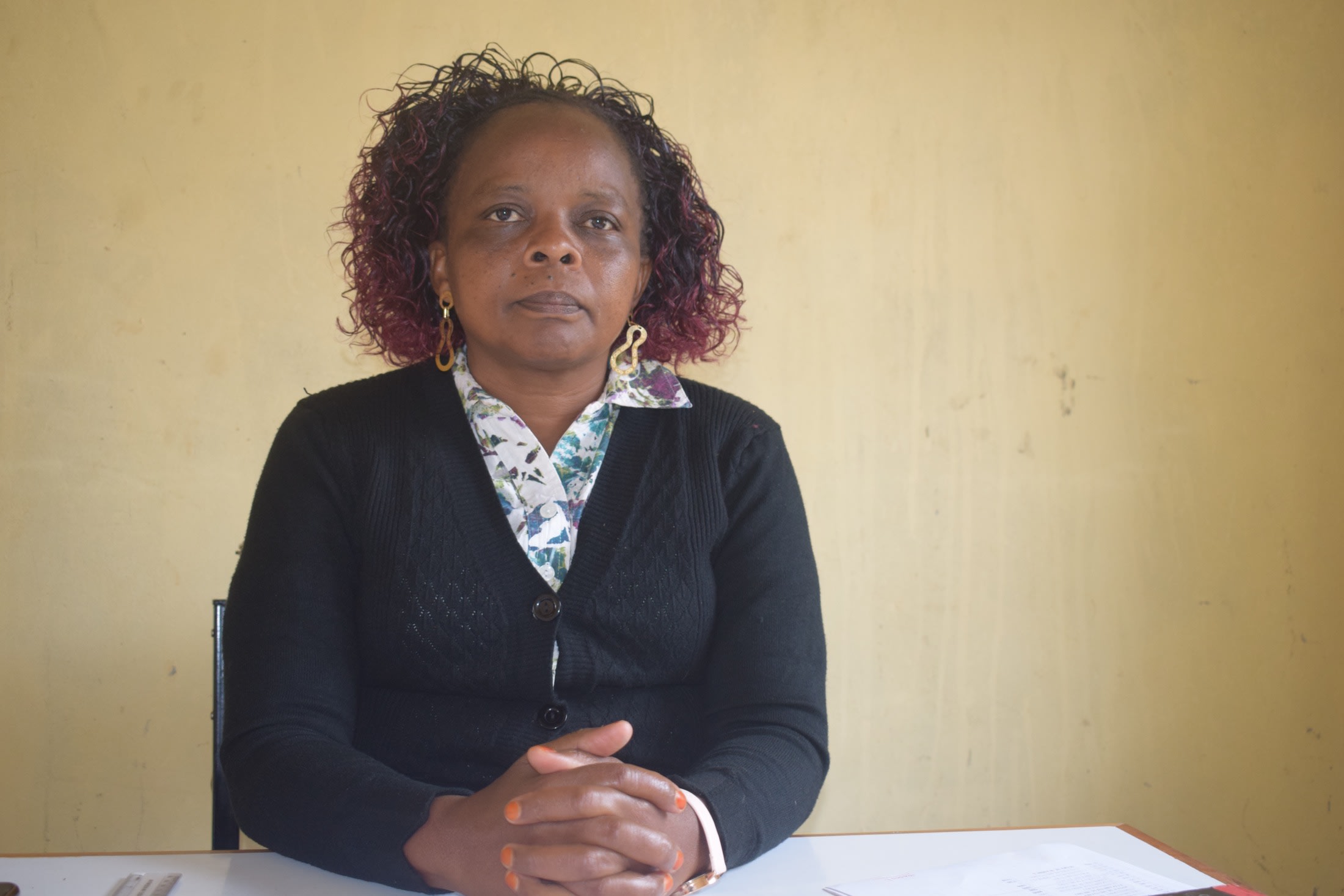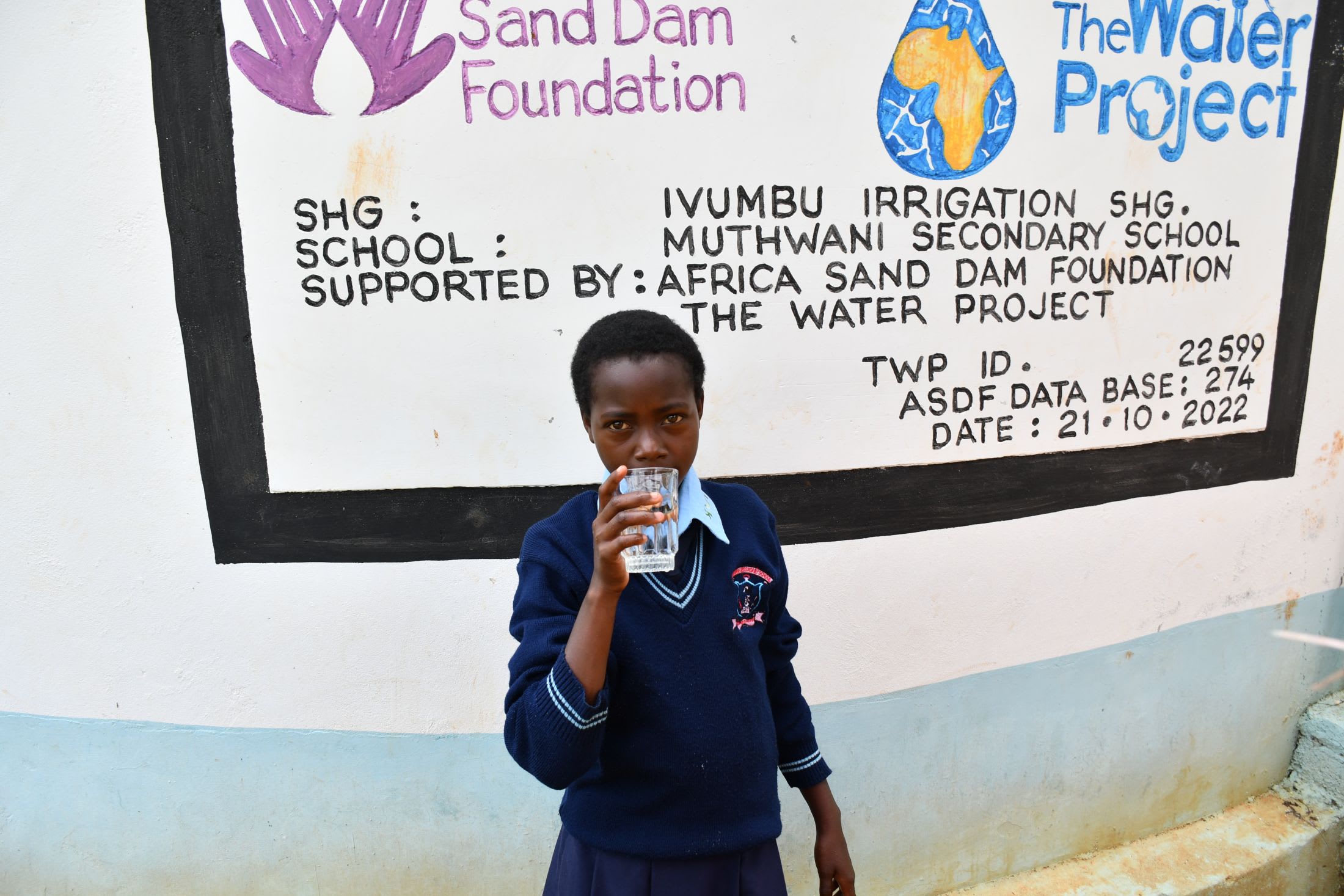The 204 students and 21 staff of Muthwani Secondary School face the challenge of collecting sufficient water each day. This is primarily students' burden, causing them to make multiple trips a day to a local dam.

When electricity is available, the school pumps water from the dam to a storage tank on their campus. Still, the staff reported that they sometimes go months without any water being pumped to the school, because the area is remote and electricity service is unreliable. Even when electricity is functioning, the cost of electricity for the school is prohibitive.
More often, students are responsible for walking to the dam, collecting water in containers, and hauling it back to fill the school's water tank. But the dam water is contaminated, which becomes apparent when the tank runs low, and all that is left is mud residue.

"I feel betrayed by the water situation making me not enjoy life in the school," said 18-year-old student Brian M. "I am a day scholar, and I have also to fetch water before attending school. I once failed to come to school. I got up very late, and I could not make up [enough time] for [collecting] water and [get to] school at the required time. So instead, I opted for water rather than attending school.
"The current water situation affects me personally because I lack enough time to relax and even play. From class, it's directly to the dam for water, then back to school when it's time for other duties," concluded Brian.
The lack of water not only affects students, but also the school's administration and staff. "The current water situation is a headache to me. When there is a shortage of electricity, I get perturbed, as now we have to go to the hard and most expensive route of both purchasing water and for students fetching from the dam," said 49-year-old Deputy Principal Mwikali Muema.

"The health of the students is a major concern to me as the school deputy. I get worried over time when issues start arising in relation to the condition of water in terms of health problems emanating from drinking the same water."
Principal Muema herself has had stomachaches in the past month, which lasted for two weeks until she visited a hospital to get medical attention. She said, "I got sick from taking in (drinking) water from the earth dam in the past month, which affected me in running the school and other roles assigned to me."
With a rain tank on their school campus, the students of Muthwani can conserve their time and energy for learning, and the administration can focus on helping students succeed.
Rain Tank
We will build a 104,000-liter rain tank for this school, making the others look tiny in comparison. Because of how rarely it rains in Southeastern Kenya, this tank's large volume is designed to store as much water as possible during the seasonal rains, making more water available through the dry months. This water will benefit the students, teachers, and supplementary staff.
Parents will mobilize the materials needed for construction, including sand, stones, and water. They will also lend their strength and time to help with the construction. We will complement their materials with a skilled artisan to lead the project in addition to providing the tools, lumber, metal, cement, and gutter system.
As soon as the tank has time to cure, it can begin collecting rainwater for the school's use.
Training
We will train students and staff on sanitation, hygiene, and other topics for 1 day. Those in attendance will form a school health club that will promote good hygiene and sanitation practices both at school and at home. They will learn all of the steps to proper handwashing, how to treat water, and how to keep their environment clean. The school will also be taught how to best oversee and maintain their new rain tank and handwashing stations.
Handwashing Stations
A total of 3 handwashing stations will be installed upon the project's completion and before training. These are 1,000-liter plastic tanks fitted with 3 taps each, allowing 9 students to wash their hands at once. The student health club and school management will be responsible for making sure the tanks are filled with water and that a cleaning agent such as soap or ash is always available.

 Rainwater Catchment
Rainwater Catchment
 Rehabilitation Project
Rehabilitation Project
































